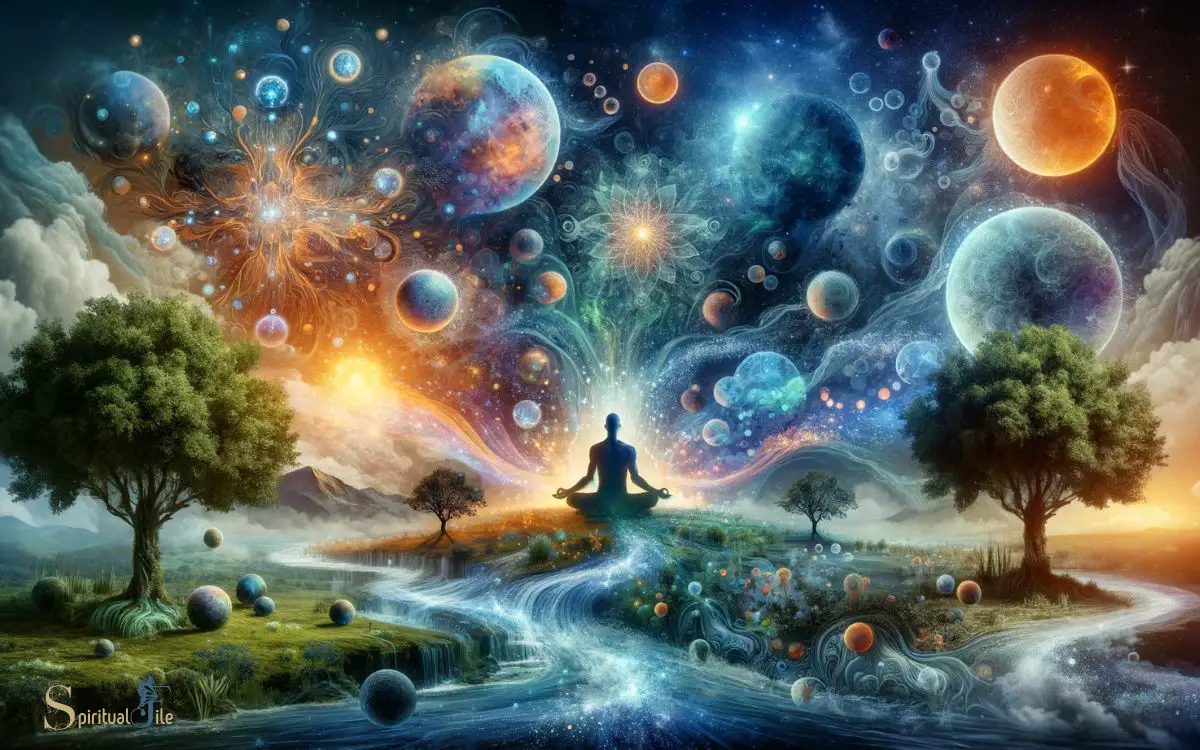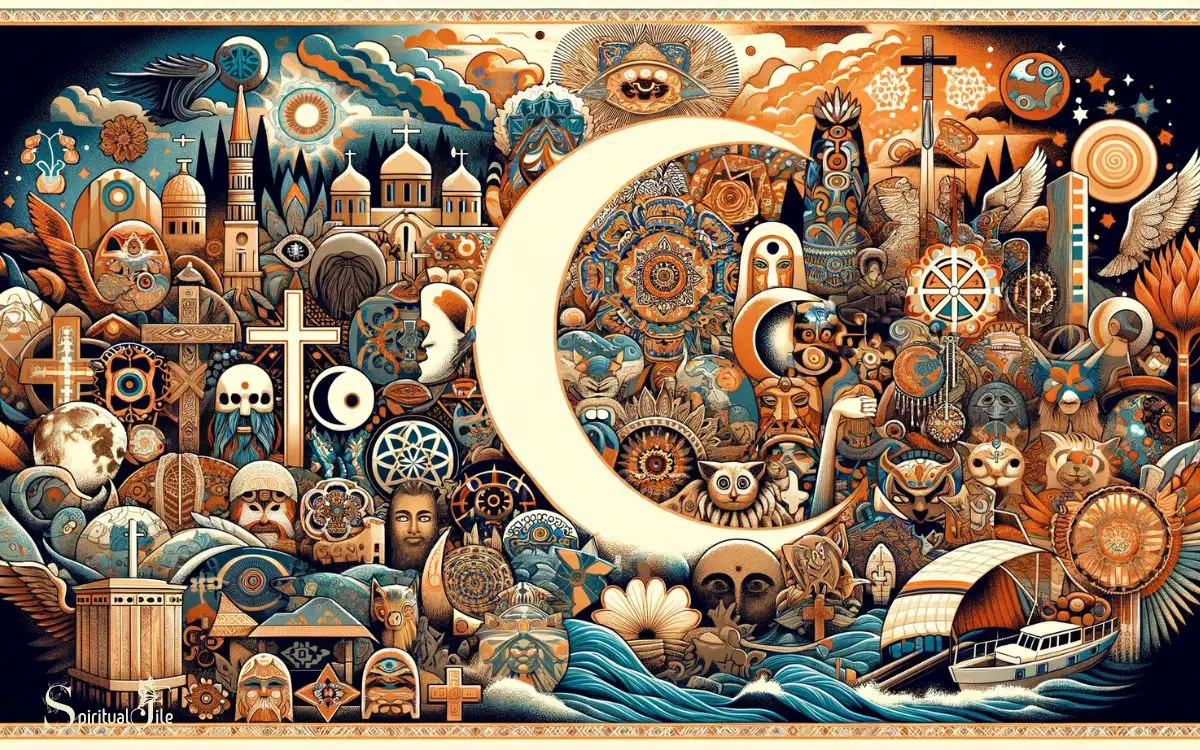Spiritual Realm Vs Natural Realm: Organisms!
The spiritual realm is often described as a dimension that exists beyond the physical world we perceive with our senses, associated with the divine, supernatural, and metaphysical.
In contrast, the natural realm refers to the physical universe, encompassing all that can be observed and measured, such as landscapes, organisms, and cosmological phenomena.
Understanding these realms illuminates their influence on beliefs, behaviors, and the essence of human existence.
The spiritual and natural realms have been subjects of philosophical, religious, and scientific discussion throughout history.
Here’s a closer look at each:
Spiritual Realm:
- Not bound by physical laws.
- Home to deities, spirits, and souls.
- Often accessed through religious or meditative practices.
Natural Realm:
- Governed by scientific laws such as gravity and electromagnetism.
- Includes everything from microscopic cells to vast galaxies.
- Studied through empirical observation and experimentation.
For example, prayer might be seen as an interaction with the spiritual realm, while planting a tree is an act within the natural realm.

Key Takeaway
4 Aspects: Spiritual Realm Vs Natural Realm
| Aspect | Spiritual Realm | Natural Realm |
|---|---|---|
| Nature | Supernatural, metaphysical | Physical, observable |
| Characteristics | Beyond the material world | Comprises the material world |
| Laws | Governed by spiritual laws | Governed by natural laws |
| Entities | Spirits, deities, energy | Living organisms, matter |
Origins of the Spiritual and Natural Realms
The origins of the spiritual and natural realms can be traced back to different philosophical, religious, and cultural traditions, providing insights into their foundational beliefs and principles.
The spiritual realm finds its roots in various religious and philosophical systems that posit the existence of a transcendent reality beyond the physical world.

This concept is prevalent in religions such as Hinduism, Buddhism, and various indigenous belief systems.
On the other hand, the natural realm is often associated with the observable universe, governed by physical laws and principles.
Scientific inquiry and empirical observation form the basis of understanding the natural realm, encompassing phenomena such as the laws of physics, chemistry, and biology.
The distinctions between these realms have shaped human understanding of the world, influencing both spiritual and scientific pursuits.
Characteristics of the Spiritual Realm

The characteristics of the spiritual realm are defined by its non-physical existence and its existence beyond human perception.
These aspects differentiate it from the natural realm, providing a unique and often mysterious dimension to our understanding of reality.
Exploring these traits can offer insight into the nature of spiritual existence and its influence on the world around us.
Non-Physical Existence
In the spiritual realm, non-physical existence is characterized by the absence of material form and the presence of ethereal energy. This ethereal energy is intangible, transcending the constraints of the physical world.
The non-physical existence in the spiritual realm is not bound by the limitations of space and time, allowing for a state of existence that is beyond human comprehension.
To emphasize this point, consider the following table:
| Characteristic | Non-Physical Existence |
|---|---|
| Absence of Material Form | ✓ |
| Presence of Ethereal Energy | ✓ |
| Intangibility | ✓ |
| Transcendence of Physical Constraints | ✓ |
This table highlights the key aspects of non-physical existence in the spiritual realm, shedding light on the ethereal nature of this realm and its divergence from the tangible aspects of the natural realm.
Beyond Human Perception
Beyond human perception, understanding the spiritual realm involves delving into the intangible and transcendent nature of existence.
Characteristics of the spiritual realm include:
- Non-Physicality: Unlike the natural realm, the spiritual realm is not bound by physical laws and limitations, existing beyond the constraints of time and space.
- Eternal and Immutable: The spiritual realm is characterized by eternal existence and unchanging nature, unaffected by the transient aspects of the natural world.
- Consciousness and Intelligence: Within the spiritual realm, there exists a profound consciousness and intelligence that transcends human comprehension, governing the spiritual realm with wisdom and purpose.
- Interconnectedness: Entities within the spiritual realm are intricately interconnected, forming a harmonious and interdependent network that surpasses individualistic tendencies.
Understanding these characteristics provides insight into the profound nature of the spiritual realm that lies beyond human perception.
Characteristics of the Natural Realm

The natural realm is characterized by the governance of physical laws that regulate observable and quantifiable phenomena.
These laws provide a framework for understanding the natural world and its processes, allowing for systematic study and analysis.
Physical Laws Govern Natural
Physical laws govern the natural realm, establishing the fundamental principles that dictate the behavior and characteristics of the physical world.
These laws include:
- Law of Gravity: Governs the attraction between objects with mass, keeping our feet on the ground and planets in orbit.
- Laws of Motion: Described by Isaac Newton, these laws explain how objects move when forces act upon them.
- Conservation Laws: These laws state that certain properties, such as energy and momentum, remain constant in a closed system.
- Thermodynamic Laws: These laws describe the behavior of energy and heat transfer within systems, governing processes such as refrigeration and combustion.
Understanding these physical laws helps us comprehend the workings of the natural realm and its observable and quantifiable phenomena.
Observable and Quantifiable Phenomena
In the study of the natural realm, observable and quantifiable phenomena are analyzed through the lens of scientific inquiry. This approach allows researchers to systematically observe, measure, and analyze various aspects of the natural world.
The following table outlines some key observable and quantifiable phenomena in the natural realm:
| Observable Phenomena | Quantifiable Phenomena | Examples |
|---|---|---|
| Weather patterns | Biological population sizes | Temperature, precipitation |
| Planetary motion | Chemical reactions | Orbits, rotation |
| Geological formations | Energy levels | Mountains, rock formations |
Through rigorous observation and measurement, scientists gain valuable insights into the workings of the natural realm, contributing to our understanding of the world around us.
Interactions Between the Two Realms

Interacting with the spiritual realm requires a deep understanding of its distinct characteristics and the implications of crossing into its domain.
When engaging in interactions between the spiritual and natural realms, it is crucial to consider:
- Intentions: The motives behind seeking interaction with the spiritual realm should be pure and respectful, aiming for enlightenment or guidance rather than manipulation or control.
- Protection: Prioritize spiritual protection through practices such as prayer, meditation, or the presence of experienced spiritual guides to ensure a safe and positive interaction.
- Discernment: Developing the ability to discern between benign and malevolent spiritual entities is essential to avoid potential harm or deception.
- Balance: Maintaining a balance between spiritual exploration and grounded presence in the natural realm is vital for overall well-being and mental stability.
Perceptions and Beliefs Across Cultures
Across diverse cultures, there are varied perceptions and beliefs regarding the spiritual and natural realms.
Some cultures view the spiritual realm as intricately intertwined with the natural world, with spiritual beings coexisting alongside humans, animals, and nature.

In contrast, other cultures may perceive the spiritual and natural realms as distinct and separate, with limited interaction between the two.
Additionally, beliefs about the afterlife, ancestral spirits, and the influence of supernatural forces on daily life greatly differ among cultures.
These variations in perceptions and beliefs stem from a combination of historical, geographical, and sociocultural factors, shaping the way individuals understand and relate to the spiritual and natural realms within their respective cultures.
Understanding these differences is crucial in fostering intercultural respect and appreciation. It also provides insight into the rich tapestry of human experiences and worldviews.
These diverse perceptions and beliefs have significant implications for human existence, influencing everything from societal norms and customs to individual spiritual practices and worldviews.
Implications for Human Existence

Understanding the coexistence of spiritual and natural realms holds significant implications for human existence. This understanding shapes our worldview, values, and decisions, influencing every aspect of our lives.
The implications for human existence include:
- Moral Framework: The belief in a spiritual realm often provides a moral framework that guides human behavior and decision-making.
- Purpose and Meaning: Exploring the spiritual realm can offer insights into the purpose and meaning of human existence, providing a sense of direction and fulfillment.
- Connection and Community: Belief in the spiritual realm often fosters a sense of connection and community, shaping social structures and relationships.
- Mental Well-being: Understanding the spiritual realm can impact mental well-being, providing comfort and resilience in the face of life’s challenges.
How Do Organisms Connect and Interact with the Spiritual and Physical Realms?
The connection between organisms and the spiritual and physical realms is a complex web of interactions. Organisms navigate both realms through their spiritual and physical emotions, influencing and being influenced by the energies and forces present in each. This interplay shapes their experiences and responses to the world around them.
FAQ About Spiritual Realm Vs Natural Realm
How Do Scientific Theories About the Origins of the Natural Realm Intersect With Spiritual Beliefs About the Origins of the Spiritual Realm?
Scientific theories about the origins of the natural realm are based on empirical evidence and natural laws, while spiritual beliefs about the origins of the spiritual realm are rooted in faith, mythology, and religious traditions.
Are There Specific Rituals or Practices That Can Help Individuals Access the Spiritual Realm or Connect With the Natural Realm?
Exploring rituals and practices that facilitate access to the spiritual or natural realm involves understanding their cultural and historical significance.
These traditions often serve as pathways for individuals to connect with deeper aspects of existence.
Can Individuals Exist in Both the Spiritual and Natural Realms Simultaneously, or Are They Separate Experiences?
It is widely debated whether individuals can exist simultaneously in both the spiritual and natural realms or if these are separate experiences.
This question delves into complex philosophical and metaphysical concepts that continue to intrigue scholars and spiritual practitioners alike.
Are There Any Scientific Studies or Evidence That Support the Existence of the Spiritual Realm, or Is It Purely a Matter of Faith?
Scientific studies have yet to provide empirical evidence for the existence of the spiritual realm, leaving its validation predominantly within the realm of faith.
The quest for understanding the spiritual realm continues to inspire philosophical and metaphysical inquiry.
How Do Different Cultures and Belief Systems Perceive the Interactions Between the Spiritual and Natural Realms, and Are There Common Themes or Differences in These Perceptions?
Different cultures and belief systems perceive the interactions between spiritual and natural realms in diverse ways.
Common themes include the existence of higher powers and the interconnectedness of all things, while differences arise in cosmology and the nature of spiritual beings.
Conclusion
The coexistence of the spiritual and natural realms has been a topic of interest across various cultures and belief systems.
The intricate interplay between these two realms adds depth and richness to human existence, offering a sense of interconnectedness and purpose.
As we navigate the complexities of life, we are reminded that the spiritual and natural realms are like two sides of the same coin, each influencing and shaping the other in a harmonious dance of existence.






